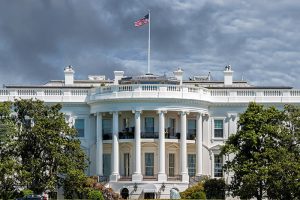Registered nursing training program going well
Pearl Lorentzen,
Local Journalism Initiative Reporter
In the spring of 2023, Northern Lakes College (NLC) and Athabasca University announced 60 seats over three years for NLC licensed practical nurses (LPN) graduates to join Athabasca University (AU)’s post-LPN bachelor of nursing program.
“Overall, it is going well,” says Dr. Steven Johnson, Athabasca University’s dean of the faculty of health disciplines.
Asked how the partnership works, Johnson says, “we work together to establish students that would be a good fit.”
The partnership is an enrolment extension for the Athabasca University program, which has existed since the early 2000s. It trains licensed practical nurses (LPNs) and registered psychiatric nurses (RPNs) to be registered nurses (RNs).
Alberta has licensed practical nurses (LPNs), registered psychiatric nurse (RPNs), registered nurses (RNs), and nurse practitioners (NPs). LPNs and RPNs have completed a two-year diploma. RNs have a bachelor of nursing degree and have passed the national RN exam. To become an NP, an RN has to do a masters in nursing. University of Calgary also offers a doctor of nursing degree (DN).
RNs provide a higher level of care and make more money than LPNs. NPs provide another level of care higher. For example, at the Slave Lake Family Care Clinic a person can choose to have either a family physician or a nurse practitioner.
Studying from home
To become an RN, students have to complete a four-year course. This can be through a brick-and-mortar university (moving to the community and taking classes in person) in a larger centre – Red Deer, Calgary, Edmonton, Fort McMurray, Grande Prairie, Medicine Hat, Lethbridge.
Athabasca University offers the only online bachelor of nursing program in Alberta, says Johnson.
As of October 2023, this program had 2,300 students actively enrolled, says Johnson. Students in this four-year nursing program have up to seven years to complete it.
The majority of these students will do the course part-time, while continuing to works as an LPN or an RPN, says Johnson. They also don’t have to move to a bigger centre.
“We have students from across the country,” says Johnson.
The NLC and Athabasca partnership was made possible by a grant from the Government of Alberta to add 20 seats over three years to this program.
The first cohort of students will do their practicums in the 2025-2027 school year, with an expected graduation of 2027.
“This NLC course, they go together for all of their courses,” says Johnson, “and that is different for us.”
All Athabasca University courses are asynchronous, which means that the instructor records the content ahead of time and the students take the course when they have time. The NLC/AU students do this as well, but they all take the same courses at the same time.
“Our students have the option of learning on their own schedules,” says Johnson, “with the exception of their practicums.”
In the fourth year, the students do three practicums.
For the NLC/AU students, Athabasca University has lined two of these up in the students’ home communities. The psychiatric placement may have to be done outside of the community.
“We’ve got that pretty much settled,” says Johnson.
Northern Lakes College has students from across Canada, but its main service area is northern Alberta from Fox Creek to High Level.
One of the reasons for the creation of the Northern Lakes College and Athabasca University partnership was to offer a bachelor of nursing (RN) in the Lesser Slave Lake area.
Earlier this fall, Dr. Glenn Mitchell, NLC president, told The Leader that the partnership came about because it was the easiest way to bring an RN program to the area.
“The college heard from the region,” he said, “and we know that we have a shortage of registered nurses.”
Part of that advocacy came from the Alberta North Central Alliance (ANCA), which represents four municipalities and five First Nations in the Lesser Slave Lake area in northern Alberta.
Athabasca University was unable to give a community breakdown of students, but says that 95 per cent of the students which are part of the NLC/AU program are from northern Alberta.
The partnership is in its second year, so has space for 40 NLC graduates. As of late October, it had 34 students.
“We’re slightly lower than we had expected,” said Johnson.
LPN to RN
The nurse practitioner program builds on the RN program, but the LPN/RPN programs are separate from the RN program.
People wanting to become an RN can either attend one of the brick-and-mortar programs without any related education, or attend an online post-LPN to RN program.
“We’re not a direct entry RN program,” says Johnson. “They have to be a licensed practical nurse.”
However, both direct entry and post-LPN programs are the same length – four years.
The one exception in Alberta, that The Leader could find, is a certificate offered by Red Deer Polytechnic called a licensed practical nurse to bachelor of science nursing transition program.
This is a one-year part-time blended certificate, so likely the equivalent of half a year.
Once LPNs have completed the certificate, they can apply to enter the third year of the bachelor of science in nursing program at Red Deer Polytechnic, which is in partnership with the University of Alberta.
This sounds like completing the RN program in an additional two and a half years, instead of a full four years.
Another possible exception to the full four years is that the University of Calgary’s website says, it has limited admissions to the second year of its bachelor of science in nursing, based on prior post-secondary course work.
It appears that to become a registered nurse takes a four-year bachelor of nursing program no matter if a person is already has two years of schooling to become an LPN or RPN or has just left high school.
Pearl Lorentzen,
Local Journalism Initiative Reporter
Lakeside Leader


